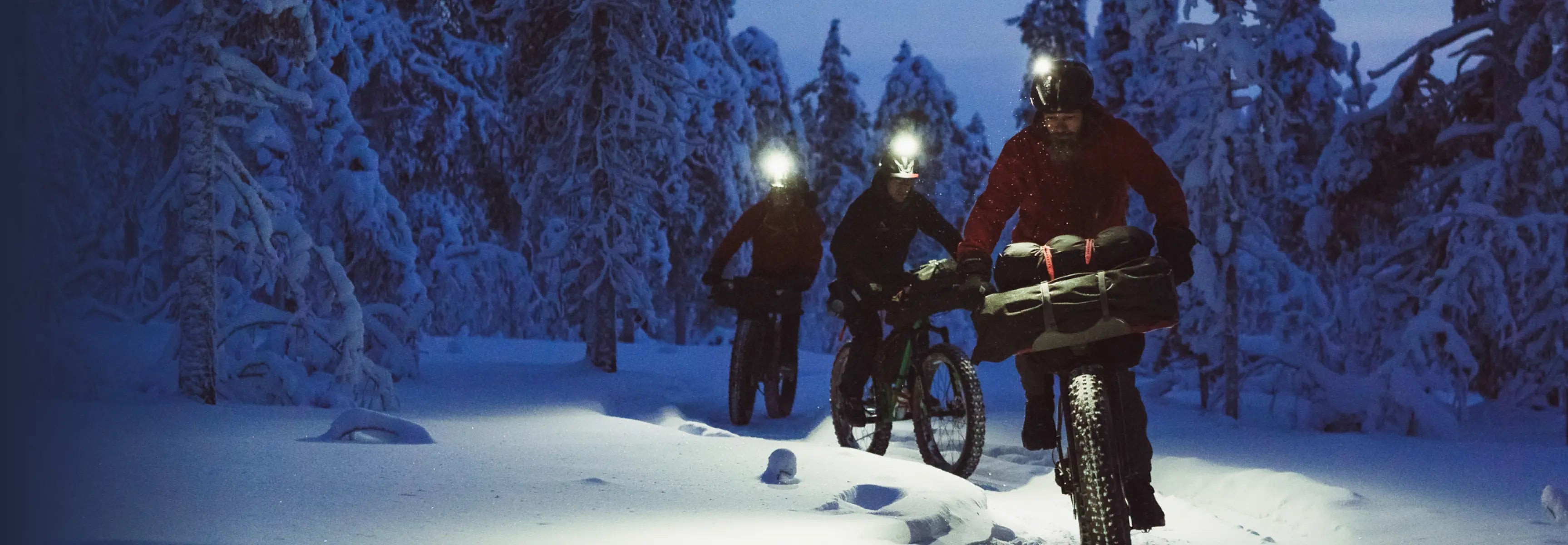
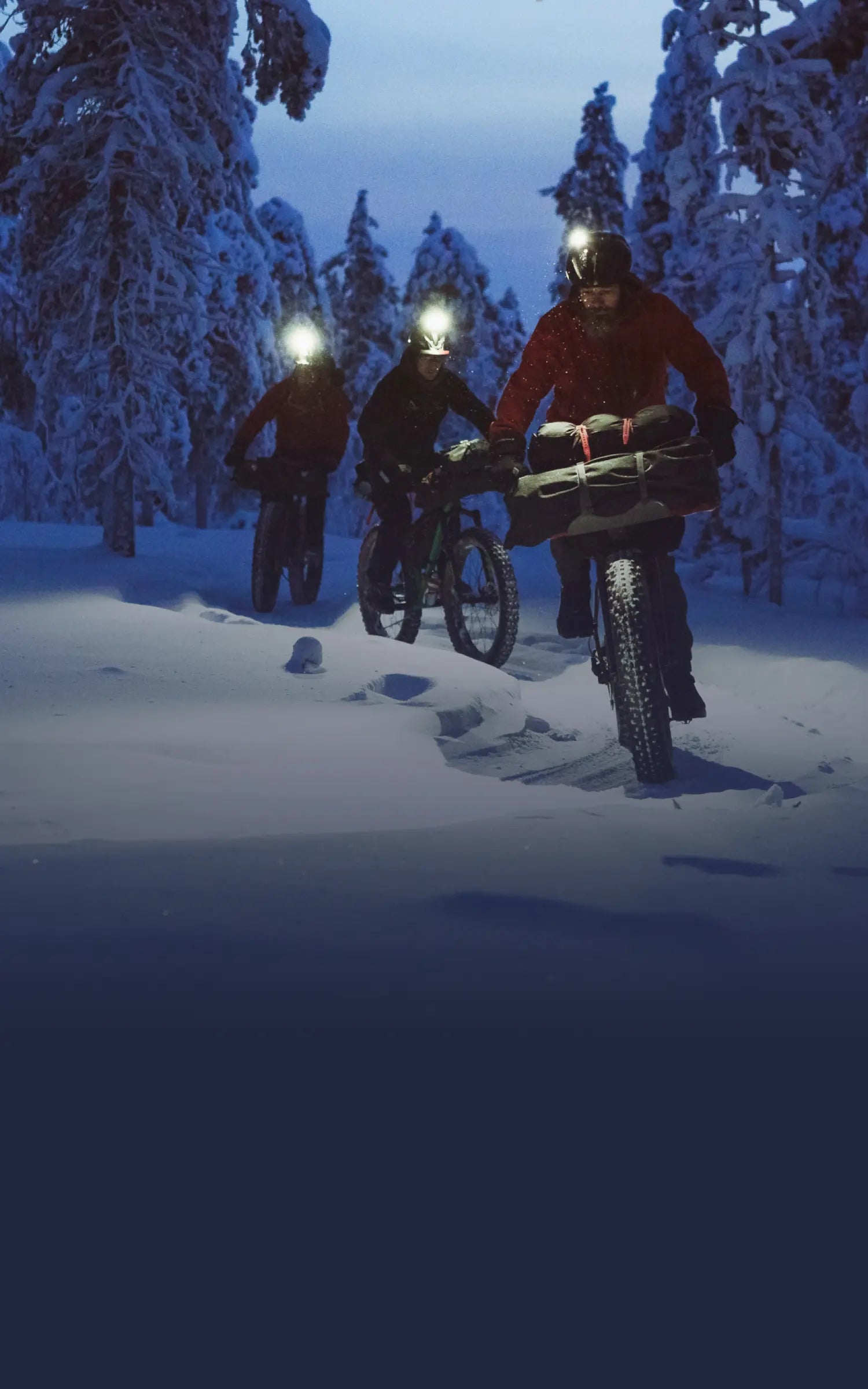
SUUNTOブログ
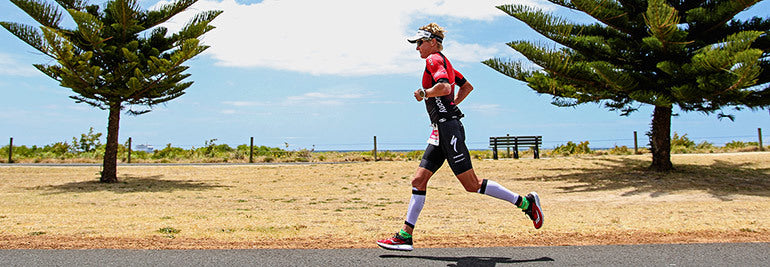
Meet Mel Hauschildt, one of the world’s best triathletes
Most people call me Mel.
I’m from Queensland, Australia, and I do triathlon. I used to be a professional runner with my main events as the 1500m and 3k steeplechase.
I swapped to Tri in 2010 – I couldn’t afford to be a runner, and I kept getting injured. I gave triathlon a go, made some money, and kept doing it!
Mel's background is in running – but now she loves the bike. © Thierry Sourbier, onlinetri.com
I just jumped in.
I did a small local race one weekend before to put it all together, and then just jumped in a half Ironman.
The half is my favorite distance.
You can do 70.3 every weekend, and I like racing, so I do that. It’s not so tough on the body and you don’t need the recovery time of the longer races.
I only started swimming for real in 2010.
I never really liked the water, I was more a land person. I could swim, of course, every kid in Australia grows up at the beach – but I used to get my mom to write me notes to get out of swim class! Swim is still my weakest part of the race – I never enjoy a swim. My favorite swim is Sunday afternoon for an ocean swim. I don’t hate it like I did when I first started.
If I retired tomorrow I’d probably never get in the lap lane again.
I’ve tried everything in the water and don’t improve – I’d swim the same times if I swim 30k a week or if I sat in the chaise lounge next to the pool. It totally does my head in!
I love the bike.
I usually try and ride hard, and get to the front in the bike leg, and make up what I’ve lost in the swim. To be honest, it’s my favorite part of the race.
Mel on her way to a win in Ironman Western Australia in December. © witsup.com
But the run is my strongest leg.
I put more effort in the bike, but I can leave it all out there in the run – I think I have a better pace judgement in running, and know not to go out too fast. I’ve got a lot more KMs in my base as a runner than most triathletes.
My training is a little unorthodox.
I guess coming from a running background, I train quite differently – when I first started I went with a tri coach but I just didn’t agree with how he was doing things. Now my husband coaches me. I actually do a lot less running than most triathletes. I was getting a lot of injuries, so I bought a bike and got quite good at that. I do most of my base work there. I run up to 70k a week, where as most athletes do up to 100. But I do a lot more on the bike than them.
I’ve got a few injuries.
Most of my injuries have been in my running career – every stress fracture under the sun. I ruptured my hamstring tendon, after it had been tearing, but it wasn’t diagnosed, and it was six months till I got it fixed. So now I have two muscles going through one tendon. I have a broken rib that just won’t heal. That’s life!
I love the hometown crowd.
I used to always say Phuket was my favorite place to race – I just love the location. But the race has changed a bit, and now I really love racing in Australia – but I don’t get to race their often.
Stay tuned for Mel's triathlon training tips!
Main image © witsup.com
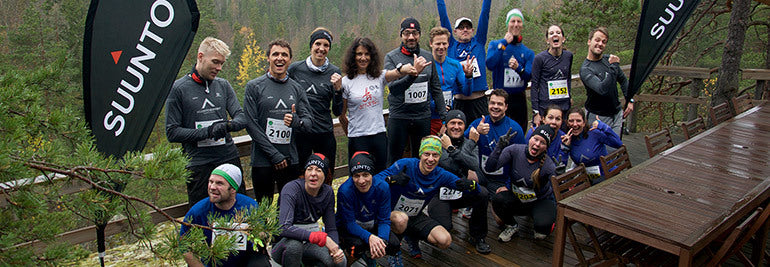
Suunto Summit 2017
Watch the video and experience the first ever Suunto Summit that was held in October, 2016.
We are thrilled to share the selections for the Suunto Summit 2017. After hosting an open, public application process, we received inspiring motivation letters and stories from all around the world.
Within our final group we have authors, awarding- winning photographers, influential bloggers; we have XTERRA world-champions, and winners of major ultra-trail races. Balancing these inspiring experiences and accomplishments was a challenge, but we are thrilled to have had so many inspiring applications that shared a synonymous passion for being a part of the Suunto community.
Stats:
6 female, 9 male
9 from Europe (2 France, 1 Spain, 1 Finland, 2 Sweden, 1 Norway, 1 Latvia, 1 UK, 1 Switzerland)
2 from USA, 1 from New Zealand, 1 China, 1 Malaysia.
Suunto Summit 2017 participants:
Arnau - Spain
Diane-Perle - Switzerland
Marta - Latvia
Marit - Norway
Mia - USA
Barbara - USA
Petra - New Zealand
Ramon - Malaysia
Sebastien - China
Pelle - Sweden
Jean-François - France
Tim - United Kingdom (UK)
Mathias - France
Sante - Finland
Oskar - Sweden
Congratulations to all selected, and a huge thank you to all who applied and shared their passion with us!
- Suunto Team
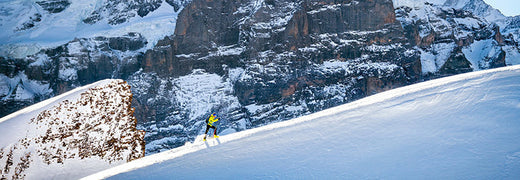
World Vertical Week 2017 Big Data: See who stands on the top!
The World Vertical Week is about collecting vertical meters for your country and your sport. All moves in all human-powered outdoor sports count. To keep the playing field level, we were only comparing averages. A cumulative number of ascent meters per country would not have made sense as the population and number of Suunto App users varies.
Skiers are still quite clearly the queens and kings of the hill with 849 meters of ascent in average. The mountaineers climbed on the second spot with 636 meters and the trail runners rounded out the top three with their 400 ascent meters.
Actually the order of the activities remained almost identical compared to 2016: the only difference was that mountain bikers passed the snowshoers in the listings.
Average ascents in various activities
Ski touring 849m
Mountaineering 636m
Trail running 400m
Mountain biking 362m
Snow shoeing 316m
Trekking 293m
Cycling 236m
Cross country skiing 222m
Running 104m
SKI TOURING IS NUMBER ONE – BUT WHO SKIS THE MOST?
Now that we know that ski touring is the sport with the biggest average ascents, it is time to dig deeper. The snowy winter in the Pyrenees has boosted the skiing spirits of the Spanish and they were the only athletes to cross the thousand vertical meter mark – in any country and any activity. Felicitaciones, españoles!
Top 10 countries in ski touring
Spain 1034m
Switzerland 938m
Slovakia 936m
Germany 927m
Andorra 916m
Italy 909m
USA 883m
Austria 877m
Poland 874m
France 858m
A SLIGHT SURPRISE IN MOUNTAINEERING
Mountaineering was second in the activity listings. But the leading nation within that activity was a slight surprise: United Kingdom surely has a long mountaineering tradition, but only a few – at least here in the Suunto office – would have bet their money for the island nation. The UK was not among the top mountaineering nations last year, but still they took the first place with 836 meters in 2017.
Top 10 countries in mountaineering
United Kingdom 836m
Italy 772m
Switzerland 749m
Germany 713m
Japan 685m
France 683m
Austria 655m
Taiwan 620m
USA 600m
South Korea 575m
ASIAN COUNTRIES DOMINATED TRAIL RUNNING
It was clear already last year that China, Hong Kong and Japan are strong in the trail running segment. This year they occupied the top three with excellent performances and clear margins.
Maybe having the Vertical Week in winter limits the possibilities for trail running in mountainous areas in Europe and North-America but still the Asian performance was impressive. Great climbing, China, Hong Kong and Japan!
Top 10 countries in trail running
China 887m
Hong Kong 808m
Japan 711m
Italy 572m
Portugal 540m
Spain 524m
United Kingdom 509m
Slovenia 469m
Greece 468m
Austria 437m
CLOSE MARGINS IN COUNTRY COMPARISONS
We also analysed the data for all human powered outdoor sports and compared the average ascents between countries. The margins were tight, but still there was one above the rest: The Austrians ascended on average more than any other nation, 320 meters per every workout tracked during the Vertical Week.
Top 10 countries overall
Austria 320m
Italy 298m
Switzerland 287m
Spain 261m
Slovenia 261m
Portugal 258m
Hong Kong 247m
France 240m
Norway 235m
Slovakia 218m
TOP COUNTRIES IN OTHER ACTIVITIES
And to give you even more to speculate here are the top countries in the other activities mentioned above.
Top 10 countries in mountain biking
Italy 515m
Slovenia 479m
Spain 471m
United Kingdom 465m
Austria 461m
Switzerland 443m
South Africa 416m
France 370m
Germany 367m
Poland 366m
Top 10 countries in snow shoeing
Italy 564m
Andorra 530m
Austria 510m
Germany 429m
France 424m
Switzerland 345m
USA 228m
Spain 213m
Canada 178m
Finland 163m
Top 10 countries in trekking
France 406m
Italy 397m
Austria 353m
Poland 322m
Spain 307m
USA 274m
Germany 271m
Norway 243m
United Kingdom 229m
China 141m
Top 10 countries in cycling
Spain 405m
Italy 403m
South Africa 393m
Colombia 392m
Portugal 355m
Cyprus 332m
Switzerland 328m
Czech Republic 308m
France 298m
Austria 294m
Top 10 countries in cross country skiing
Czech Republic 391m
France 312m
Poland 286m
Norway 270m
Sweden 266m
Italy 260m
Austria 252m
Canada 225m
USA 222m
Germany 221m
Top 10 countries in running
Portugal 157m
Hong Kong 151m
Slovenia 148m
Switzerland 136m
France 128m
Spain 127m
Norway 126m
New Zealand 124m
USA 117m
Czech Republic 115m
Main image © Patitucci Photo
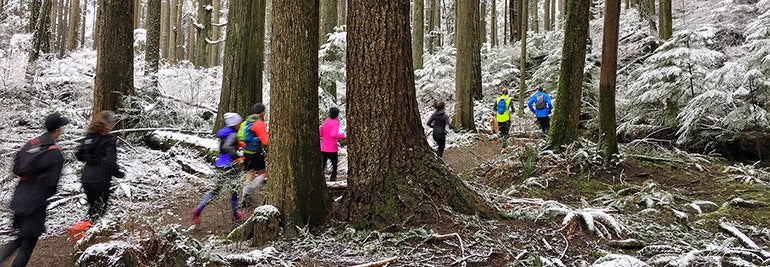
Hollie, Sami and Christoph are the Vertical Week photo contest winners
World Vertical Week was held last week and the hundreds of pictures tagged with #verticalweek on Instagram give a great overall look into what people have been up to during the week. Three of the most inspirational photos were taken by Hollie Holden, Sami Renner and Christoph Oberschneider. Each one of the winners will receive a new Suunto Spartan Ultra to accompany them on their future adventures.
🌲// Legs/entire body felt like an 🐘 at this weeks @vanrunco trail ✈️ crew BUT I managed to hit my @suunto #VerticalWeek goal of 4000m (1k more than my 1st goal! 🙌) of climbing and we were blessed with a pretty layer of 'convenient snow', right @coralie2700 ? 😉🤣❄️
A post shared by Hollie Holden (@holholden) on Mar 5, 2017 at 12:59pm PST
“The Vertical Week was a great opportunity for me to start building my strength and climbing skills ahead of my upcoming training season for my 1st 50 mile Ultra Marathon - the Squamish 50 in August which is a tough, mountainous course with 11,000 feet (3350m) of climbing!
I set myself the goal of covering a similar amount of climbing during Vertical Week so I spent a lot of time on a local trail called the BCMC which starts at the base of Grouse Mountain climbing to the top. This trail has 850m of elevation gain in just 3km of climbing! I ended up doing this trail 4 times in the week (3 times within one 24hr period!) then finished off the week running trails with my local run crew, Vancouver Running Company Flight Crew, surpassing my 3k goal and hit 4000m for the week instead!
The weather in Vancouver has been unseasonably cold, with lots of snow & wet rain and I wouldn't have done anywhere near as much climbing last week if it wasn't for the awesome community of friends that I have here who are willing to come climb mountains in a snow storm with me!”
–Hollie Holden, BC, Canada
Cause she asked so friendly... 🐦 #lovemountains #skimo #verticalweek #collectingmoments #mountaineering #watzmann
A post shared by Sami (@samirenner) on Mar 5, 2017 at 10:10am PST
“The photo was taken on the last of three summits at the “Watzmann-überschreitung”, a famous summer tour in my hometown with over 24km and 2500m of climbing. The goal for me was to do this very technical tour with skis. As I reached the third summit, I shared my last Powerbar with a bird.
A few days earlier during the Vertical Week I was in Zermatt, reaching Breithorn’s (4164m) west and east summits on skis, and on two more skitours. All in all, my Vertical Week was about 7500m of elevation gain over 65km.”
–Sami Renner, Germany
Welcome back, #winter! Yesterday was a great #powderday in @visitgastein. Can't wait for more!
A post shared by Christoph Oberschneider (@coberschneider) on Mar 2, 2017 at 3:09am PST
“I work as a backcountry skiing photographer in Austria, so my goal each winter season is to capture the beauty of backcountry skiing & ski touring, to share my passion for the sport with as many people as possible and ultimately to get more people to enjoy life in the outdoors.
So far we have had a very dry winter here in the Alps, so getting good shots has not been an easy task. So when it finally started snowing 10 days ago, I headed out to Sportgastein (a freeride spot close to Salzburg) with two good friends. We found some beautiful lines in the backcountry with lift-supported ski touring and I managed to get some good shots. And that's how I also spent the rest of the Vertical Week, ski touring in the mountains around Salzburg and trying to capture the beauty of the winter landscape and some more skiing action before the snow starts melting again.”
–Christophe Oberschneider, Austria
Congratulations to our three winners and thank you very much everyone for sharing your Vertical Week moments!
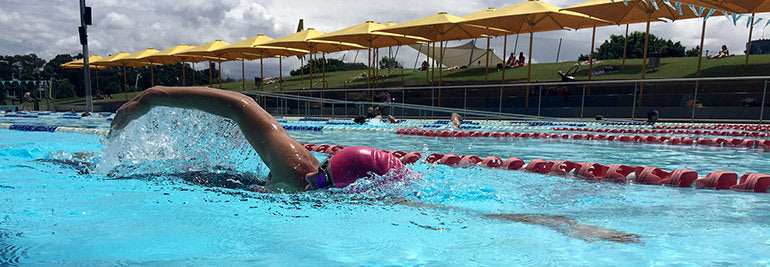
Iron Century: A world record broken down under!
Debi Hazelden has broken the record of most half-ironmans in a row.
Debi’s on top of her game
With 40 runs, bikes and swims under her belt, Debi is going strong – and going quick, averaging just under 5.5 hours. While according to the daily update blog, she’s feeling the physical drain, she’s also full of energy and raring to go. And the pictures? Debi looks as fresh as a high-school track star pacing the 10-minute-per-mile group at the local Turkey Trot. Of course, Debi’s been sneaking a carrot cake every now and then – she deserves it!
…but it hasn’t been easy.
The biggest challenges up to this point? “Illnesses – Our 7 month old son goes to daycare and has had his first couple of viruses which have been passed onto me! I had Hand Foot and Mouth in the first week and in the 4th week I’ve had a cold.
Bad news for John
Unfortunately for John, an injury had him sidelined on the advice of a doctor. Says John: "As most of you know, I have encountered a glitch on route to my immediate goal. I have an inflamed VMO muscle for which I am currently receiving treatment. The injury has prevented me from running.” It was the first the right one, then the left one – John’s done some physio and is back to logging KMs, but at well below intended volume, and he’s too far behind to catch up. What can he still do? Help Debi – which he’s doing plenty of, whether it’s beside her on the bike, in the pool, or on the track.
The weather’s been all over the place
From a high of 43-degrees celsius to wild thunderstorms with 70kmh winds, and one day with nearly ten centimeters of rain, the weather has been a challenge – especially when there’s no putting off your bike or run till the next day. Hey, at least in the pool you’re already wet.
She’s had plenty of help
A challenge like this is impossible without support – in addition to her core team, local members of the run/bike/swim community have been coming out to keep her company. If you’re in the area, head on down to Centennial Park and look for the white RV!
The swim is easy
"It’s definitely a surprise we look forward to the swim each day,” says Debi. “It’s not usually our favourite discipline. it’s like a recovery session for the body with no effort.”
Ryder – and several others – joined Debi for the record-breaking day.
Don’t worry, Ryder has baby sitters – and a stroller
One of the most remarkable things? John and Debi are doing this less than a year after having their first baby. Ryder is logging plenty of distance on his personal Suunto as he gets pushed around on his stroller during the ‘run’ portion of the race.
Only 60 more to go
With the world record already in the bag, some of the pressure is off – but the work’s not done yet. The goal is 100, and Debi’s less than half-way done. There’s sure to be more drama – follow along on their Facebook page and stay tuned here for more in-depth updates!
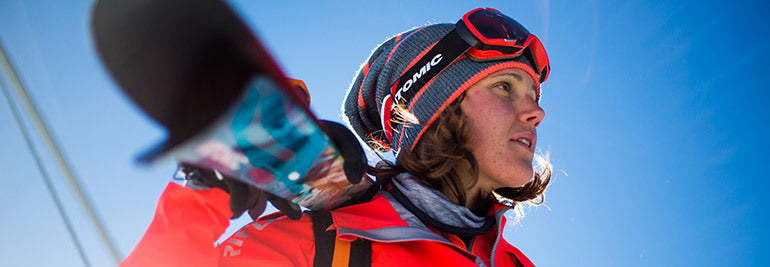
Mireia Miró: Training for Mountain Life and Beyond
Let’s talk about mountains. What do they represent for you?
I grew up in Barcelona and when I was 18 I decided to live in the mountains. Since then, I have had a constant connection with them and they have been my school in life. The mountains showed me how to feel free; they showed me their power and taught me to find mine. In difficult moments, when I’ve been injured and frustrated, they’ve showed me that they are always there with the same intensity and energy. The mountains have become a constant in my life. Constantly liberating me in my best moments and sheltering me in the worst. They have been a continuous source to help me learn more about myself.
Are you always in a constant state of training?
Mostly yes. My life is organized around training: where I live, my social life, and my work. Sometimes I wish it was not like this and I could think less about training, but knowing that I have races on the calendar or that I want to be in the best shape, my mind stays connected to training and it never switches off completely. There are periods of the year that I take it much more slowly. I also need to feel that slowness in sometimes, like I’m disconnecting and taking it easy, even if it’s not always true.
What are your most essential tools for the winter season?
I mainly use the Atomic Backland UL 65 because it is the ski that I’m most comfortable with. I love feeling light on the up and with the Backland UL 65 I also feel very comfortable on the down (if there’s not too much powder, of course!) I use these skis almost every day from the beginning of November to the end of April!
In one winter I use four pairs of Backland UL 65 skis:- One pair for training- One pair for competing in individual and teams races- One special pair for the vertical races- One pair that I use for both training and competing.- Plus four pairs of Backland UL 65 skins.
“I like to combine ski mountaineering with cross-country and alpine skiing because they are great ways to cross train.”
I couldn’t train without my Suunto watches. I use mainly the Suunto Ambit3 Sport or the Spartan. My skimo program was created with four essentials: chrono, heart beat, altitude gain, and distance. I have been using Suunto watches for eight years now, and I always have it with me no matter the sport or the kind of training, because they always provide useful information!
What does confidence mean to you?
Confidence is about trusting in yourself, trusting in your inner power, and knowing what you are capable of; it is accepting yourself as you are and taking the best of it, knowing that you are always in the right place doing the right thing. Confidence brings you so many positive emotions, which in return help you to see life in a positive way.
What is the significance of your mountain community?
I’ve found a beautiful community that is based on the experiences and sharing of the mountains. Within the mountain community I’ve found my many of my best friends and my second family.
#sheskis is a movement connecting skiers around the world. Skiing more confidently than we thought we could and crashing more than we should. We are a community of skiers, united by our love for skiing.
READ MORE
Greg Hill's mountain rules
7 tips to keep a balanced training load










































































